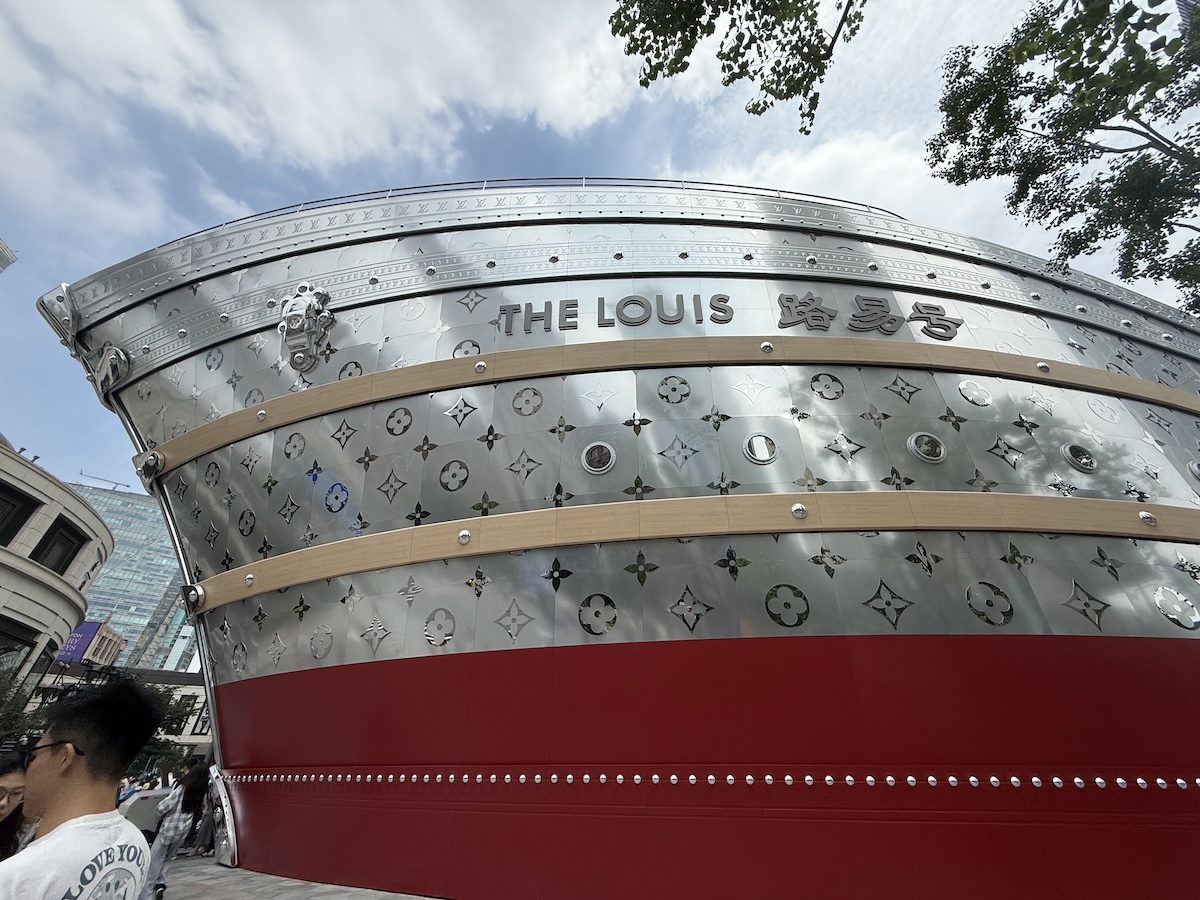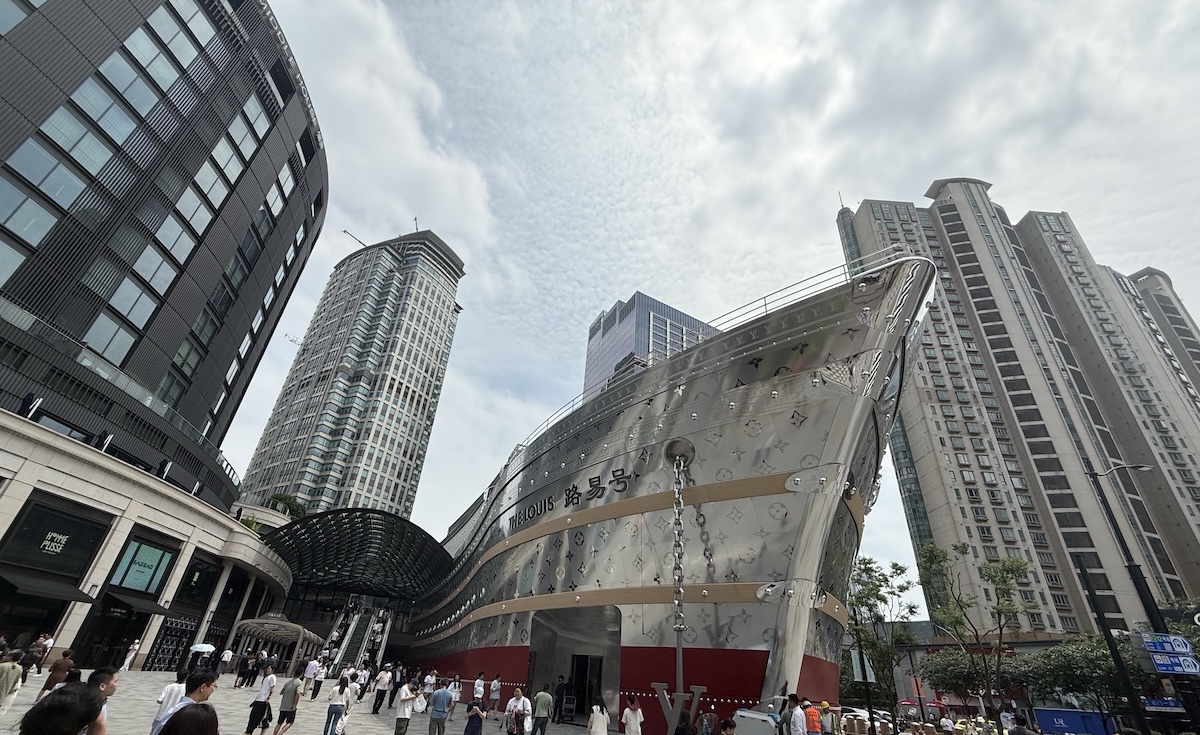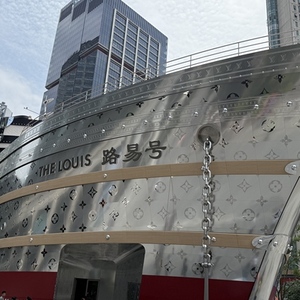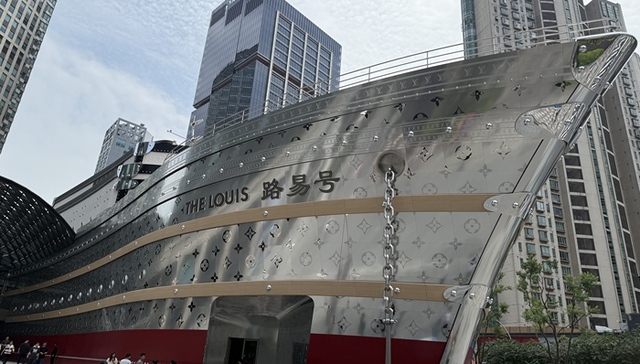by CHEN Qirui
Louis Vuitton has lifted the curtain on its latest global concept space in Shanghai—a striking, cruise ship–shaped structure that merges retail, exhibition and dining under one roof.
Located at the city's upscale HKRI Taikoo Hui complex, the 1,600-square-meter venue spans three floors and is set to open its exhibition area to the public on June 28. The vessel-inspired exterior, anchored by a red base and clad in metallic silver panels, features the brand's signature Monogram motifs. The top floor resembles an oversized trunk, while the name "The Louis" appears near the "bow" of the ship.

The new site marks Louis Vuitton's second major presence along West Nanjing Road, joining the Maison Louis Vuitton at Plaza 66, which opened in 2012 as the brand's first flagship of its kind in China.
Currently in soft launch, the new location's entrance is tucked inside the Taikoo Hui shopping mall. The concept space signals the brand's latest push to create immersive, experiential retail environments in China's most dynamic commercial zones.

Pietro Beccari, global CEO of Louis Vuitton, told Jiemian News the brand is optimistic about China's economic prospects and holds strong confidence in its consumers.
That strategy has been on full display this year. In April, Louis Vuitton and LVMH stablemate TAG Heuer staged high-profile events during the Formula 1 Chinese Grand Prix—only the second race held under LVMH's decade-long global sponsorship deal with the sport.
In 2024, Shanghai also hosted the debut runway for the Louis Vuitton "Voyager" show concept, while Plaza 66 remains a benchmark for the brand's evolution in Asia.

The new concept store is also a sign of how Shanghai's West Nanjing Road corridor continues to reinvent itself. From the heritage-laced Zhangyuan district to the sleek commercial sprawl of Jing'an Temple, the stretch is home to a layered ecosystem of luxury, lifestyle and design.
The Plaza 66 cluster remains a traditional luxury stronghold, where brands like Chanel and Hermès have recently renovated or expanded their boutiques. The Jing'an Temple area, anchored by Reel and Kerry Centre, leans more toward premium sportswear, independent labels and newer luxury names.
Meanwhile, Taikoo Hui and neighboring Zhangyuan are emerging as hubs for experiential retail. Starbucks chose Taikoo Hui to debut its first-ever Reserve Roastery outside the United States in 2017—a landmark still drawing foot traffic today. Earlier this summer, Celine brought a large-scale pop-up to Zhangyuan, blending fashion, food and film screenings in one of its most ambitious activations in China to date.
Louis Vuitton's new venue continues that trend, fusing physical storytelling with branded lifestyle elements in a high-design setting.
Other brands are following suit. Birkenstock recently opened its first pop-up in mainland China at Zhangyuan, while British heritage brand Hunter launched its first official China store there.
The evolving Zhangyuan–Taikoo Hui zone is now one of Shanghai's most active playgrounds for luxury and lifestyle. Backed by a mix of cultural heritage and high-end commercial planning, the area is fast becoming a key node in the city's retail map—one where brands aim not just to sell, but to stage, surprise and stay.





